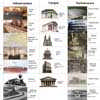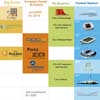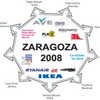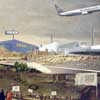The Re-Creation of the European City, Building Project News, Design Study, Image
The Re-Creation of the European City
Architectural Information – proejct by STAR strategies + architecture
9 Feb 2011
The Re-Creation of the European City Study
Europe
–
STAR strategies + architecture
The Re-Creation of the European City
“Urban Shopping List” for Secondary Cities
This study is meant to give a general idea of the elements that are shaping cities today. Cities of today have the same needs as those of hundreds of years ago: communication and representation. They need to be connected and they need to be attractive. The elements that provide these necessities change and evolve through time.
I see the European City as an evolving system of re-invention of the res publica. However, today the shape of the city is not designed solely by architects, but also by developers and multinational companies. What once the Roman roads meant for communication is represented by Ryanair today. The cult and veneration that temples received centuries ago, is these days being given to Superstar Architecture. Could Ikea be the latest step in two thousand years of evolution of the Agora?
Image captions:
Zaragoza timeline 0-2010
Matrix of necessities throughout history
Renaissance ideal city of Palmanova.(from universutopia.net)+XXI century ideal city
View of Zaragoza II, Diego Velázquez + STAR
The Current Situation
Strong competition among cities in Europe has started. The “battlefield” for these cities has widened from the national to the international stage. This process of global integration is reorienting the political, social and economical urbanism. It generates the need in these cities for incorporating certain elements that directly define the European City of today. They seek for identity. The aim is to establish relations between the cities, based on communication and representation, to belong to the spatial structure of corporations, and to create public initiatives to attract foreign investment and tourism. A beautiful square or an impressive cathedral are not enough for the city today. To be recognized as ¨A European 21st century City¨ a big portfolio of projects needs to be assembled. This portfolio will address strategies of city developers and multinational companies rather than the rules of architects. We witness how at one and the same time similar elements appear in very distant European cities, transforming them enormously, positioning them on the European map, or giving them a new identity.
Secondary Cities: The “Rising Urban Stars”¹
Yet the most radical changes are not taking place in capitals like Paris or Madrid, but in smaller and less important secondary cities that need to compete for their position in Europe. The last decades were the era of the megacity. Nevertheless, in the coming years we are going to talk much more about the smaller ones, as most of the urban populations live in these secondary cities. They have the possibility and opportunity to change. Paris will always be Paris. Today it is easier for Secondary Cities to build self-sustaining economies, independent of the big cities, as firms and workers look to avoid the problems of these major centres. Regional hubs, resort towns, provincial capitals…are booming! ²
Zaragoza, the “Urban Star”
Zaragoza (Spain) is one of these “Urban Stars”. Situated between Madrid and Barcelona, it is the fifth biggest city in Spain, with 650.000 inhabitants. Until now, Zaragoza was no more than a regional centre but it is currently developing an unprecedented number of ambitious projects. The position of Zaragoza both in the national and international context – specifically in the European – will totally change. In a couple of years, Zaragoza will have taken one of its biggest steps in its history. In 2008, Zaragoza will host the next International EXPO. It has just completed Plaza, the biggest logistics platform in Europe. Ryanair has been operating services to the city since 2004, adding a new destination every year. Ikea just opened a store last May. Since 2003, the high-speed train connects the city with Madrid in less than an hour and a half and it will connect with Barcelona in 2008. Zaha Hadid and Herzog & de Meuron are building in the city. The football stadium will be completely renovated. Global brands like H&M have shops in the city since the year 2001. It is a candidate for the European Capital of Culture in 2016. It works on its rebirth as a “City of Knowledge’’ and it has created a committee of experts, including Manuel Castells and Saskia Sassen, to implement their theories in the city.
These elements are significantly changing Zaragoza; from its position in Europe to the way the population will furnish their living rooms.
“Urban Shopping List” for Secondary Cities
1. Superstar Architect
2. Ikea
3. Low-cost airlines
4. High-speed rail connection
5. Big events
6. European Capital of Culture
7. Re-baptism
8. New football Stadium
9. Information Society
10. Global brands
The Re-Creation of the European City – Project Information
Title: The Re-Creation of the European City – Urban Shopping list for Secondary Cities.
Project name: Study about Secondary European Cities
Date: on going (from 2006 up to now)
Type: Shelf Initiated Study
Location: Europe
Site: Europe
Program: Study about Secondary European Cities: 8000 words Essay + Graphics + Interviews
Status: on going
Client: Shelf initiated (Parts of the study were funded by the Government of Aragon and the City Council of Zaragoza, Spain)
Publications
-NEW GENERATION IN ARCHITECTURE. WEST ARCH #1, Berlin, Germany, 2010
-Arquitectura e Vida #92
-Blauwe Kamer #2, Wageningen, the Nethelands, April 2009
-MONU, magazine on urbanism Second Rate Urbanism #7, Rotterdam, The Netherlands, October 2007
-The European tradition of Urbanism and its Future – International PhD conference, Delft, The Netherlands, September 2007
-Architektuur NL#06, May, 2010 Exhibitions – solo Presentations:
-Lecture at the Gerrit Rietveld Academy, Amsterdam, the Netherlands, April 23, 2009
-Lecture at the 4th ISSU Congress “The European Tradition of Urbanism – and its Future”. TU Delft, The Netherlands, September 26, 2009
Image captions:
Super Star Architects in Spain– until 2007
Ikea in the Peninsula Iberica
Low – Cost Airlines in Spain / Easyjet and Ryanair + Vueling and Clickair in Spain
Matrix of necessities of XXI c. cities.
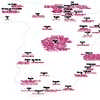
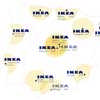
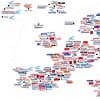
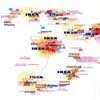
images © STAR strategies + architecture
All the images are © STAR
Location: Europe
STAR strategies + architecture : practice profile
Sphere Shelter
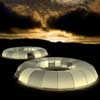
picture from architect
Treehouse Building
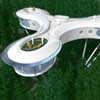
picture from architect
Comments / photos for the The Re-Creation of the European City Architecture page welcome

